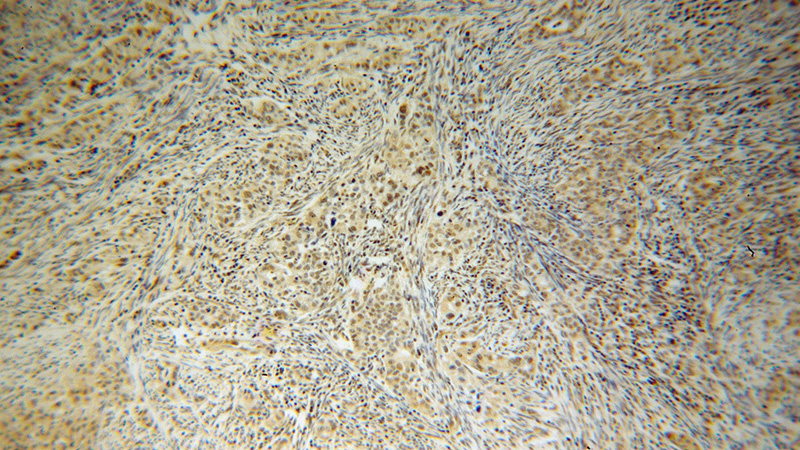-
Product Name
HLX antibody
- Documents
-
Description
HLX Rabbit Polyclonal antibody. Positive IHC detected in human endometrial cancer tissue. Positive WB detected in human placenta tissue. Observed molecular weight by Western-blot: 50 kDa
-
Tested applications
ELISA, WB, IHC
-
Species reactivity
Human,Mouse,Rat; other species not tested.
-
Alternative names
H2.0 like homeobox antibody; H2.0 like homeobox protein antibody; HB24 antibody; HLX antibody; HLX1 antibody; Homeobox protein HB24 antibody; Homeobox protein HLX1 antibody
-
Isotype
Rabbit IgG
-
Preparation
This antibody was obtained by immunization of HLX recombinant protein (Accession Number: NM_021958). Purification method: Antigen affinity purified.
-
Clonality
Polyclonal
-
Formulation
PBS with 0.02% sodium azide and 50% glycerol pH 7.3.
-
Storage instructions
Store at -20℃. DO NOT ALIQUOT
-
Applications
Recommended Dilution:
WB: 1:200-1:2000
IHC: 1:20-1:200
-
Validations

human placenta tissue were subjected to SDS PAGE followed by western blot with Catalog No:111435(HLX antibody) at dilution of 1:500

Immunohistochemical of paraffin-embedded human endometrial cancer using Catalog No:111435(HLX antibody) at dilution of 1:100 (under 10x lens)

Immunohistochemical of paraffin-embedded human endometrial cancer using Catalog No:111435(HLX antibody) at dilution of 1:100 (under 40x lens)
-
Background
In immune system, Hlx is a Th1-special transcription factor that interacts specifically with T-bet, and synergistically they promote IFN-γ expression when co-expressed. It can down-regulate the IL-4 receptor expression in naive CD4+ T cells [PMID:14688316]. Over expression of Hlx contributes ot the aberrant expression of IFN-γ in normal CD4+ T cells during the differentiation under Th2-polarizing conditions. In addition, Hlx is a negative regulator of IFN-γ production in NK cells and its inhibitory function is achieved at least in part through the proteasomal degradation of STAT4 [PMID:16424184].
-
References
- Liu T, Chen J, Xiao S, Lei X. H2.0-like homeobox 1 acts as a tumor suppressor in hepatocellular carcinoma. Tumour biology : the journal of the International Society for Oncodevelopmental Biology and Medicine. 2015.
Related Products / Services
Please note: All products are "FOR RESEARCH USE ONLY AND ARE NOT INTENDED FOR DIAGNOSTIC OR THERAPEUTIC USE"
